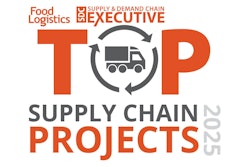
Zeva AdobeStock_1230444927
Supply chain disruptions are escalating across key industries, according to the 2025 Sourcing Survey, presented by QIMA.
“In a world increasingly defined by distrust, businesses that thrive will be those that build and maintain trust within their supply chains. Trust is the new currency in a world hungry for reliability,” says Sebastien Breteau, CEO of QIMA.
Key takeaways:
- With three-quarters of businesses expecting supply chain disruptions to persist in 2025, companies are diversifying sourcing strategies to stay ahead. Two-thirds of global companies still plan to maintain or expand operations with Chinese suppliers, underscoring China’s continued significance. Meanwhile, one in two U.S. businesses are shifting buying volumes closer to home through nearshoring strategies, with Mexico emerging as a top choice.
- As ESG regulations face pushback, product safety laws tighten, and forced labor policies evolve, businesses are struggling to keep up with shifting compliance requirements. Yet, nearly 90% of companies still lack full visibility into their supply chains, making it even harder to adapt to these regulatory fluctuations. The gap between compliance expectations and real-world implementation continues to widen, leaving many companies vulnerable to penalties, supply chain disruptions, and reputational risks.
- Once seen as a compliance necessity, sustainability is now facing growing uncertainty as ESG regulations are being challenged, delayed, or scaled back in key markets like the U.S. and Europe. While some companies remain committed to sustainable sourcing, shifting regulatory priorities are creating inconsistencies and uncertainty in enforcement. The data reveals that businesses operating under ESG mandates are still twice as likely to prioritize sustainable suppliers, yet the broader industry is grappling with how to balance compliance, cost pressures, and evolving regulations.
- Technology-driven supply chains are proving more resilient, with companies leveraging AI-powered risk assessments, real-time tracking, and predictive analytics to improve visibility, traceability, and compliance. However, wide-scale adoption remains slow, particularly in industries like toys, electrical, and electronics, where supply chains remain among the most opaque. While digitalization offers a clear path to greater transparency, many businesses struggle to implement these tools effectively, leaving critical blind spots in their sourcing networks.













